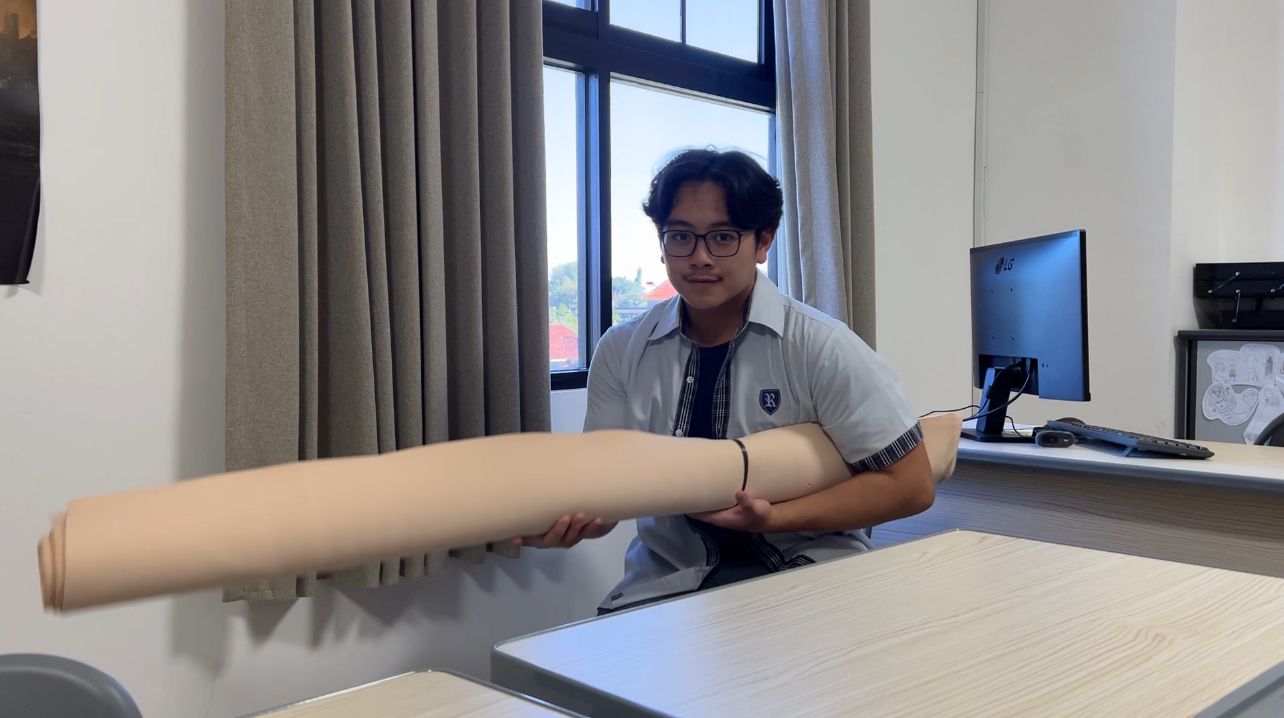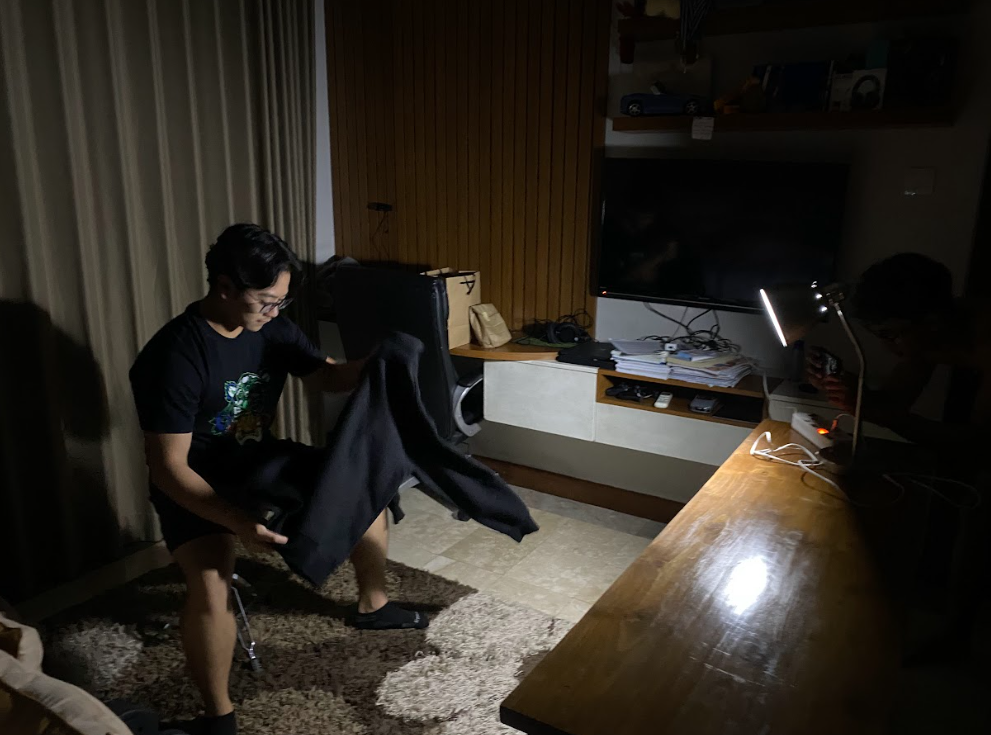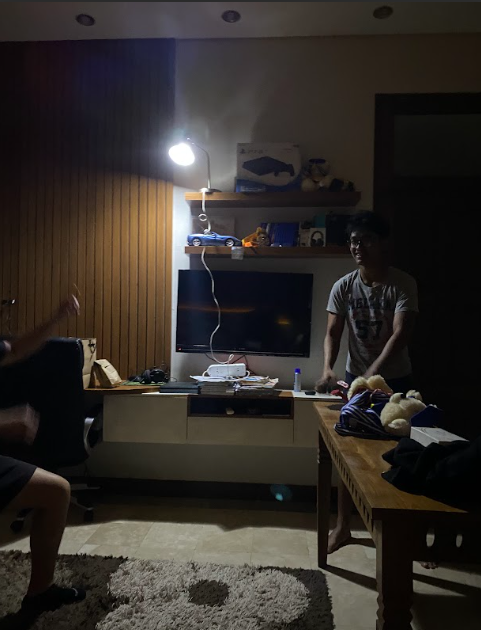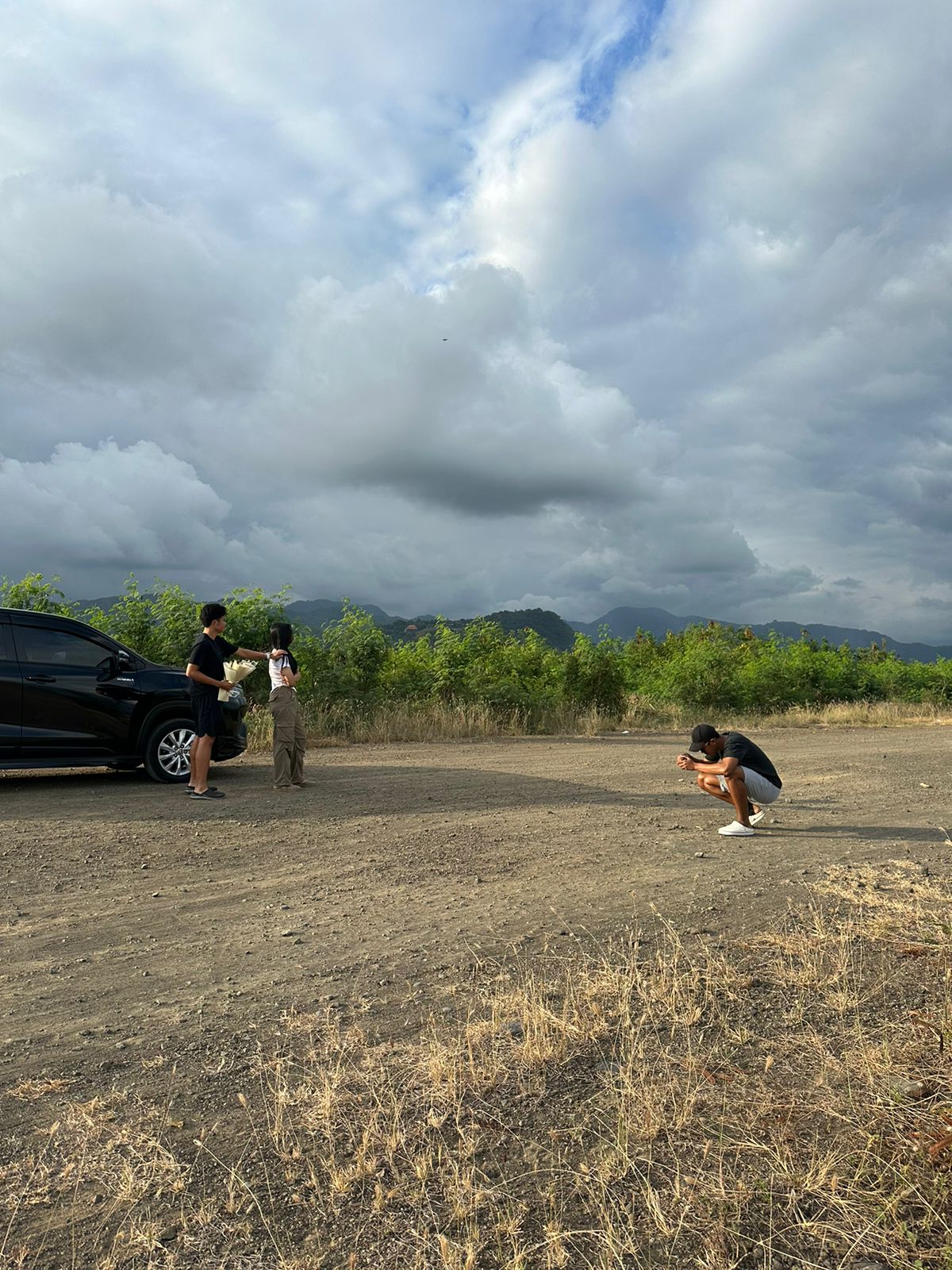This is the behind the scenes for the crime documentary (that me and Nicho made)
#1 Setting up camera angle before recording

Problems: We had difficulty finding the most suitable spot in the classroom to film the interview. There were many items in the room which do not conform with our mise en scene requirements, as can be seen in the picture above, there were loads of posters and colorful decorations on the wall. If it were in the background, it would make the interview less serious and we didn’t want that to happen.
Solutions: We did trial and error by taking pictures of a person sitting on a chair at many different parts of the classroom. Then at the end, we compared and saw which one looked the best. After we find the optimal spot, we use that for the interview.
What we changed: We changed the positions of the tripod to find the best appearance-to-angle ratio so that the interview looks proper.
What we kept the same: We used the same phone to record the scene so that the aspect ratio of the camera doesn’t change and to save time.
#2 Setting up the microphone to get clearer audio

Problems: When we were about to record another interview at my friend’s house, we ran into a problem setting up the mic since we couldn’t put the phone near the actor. So we had the idea of tying the phone to the actor’s body and hiding it under the hoodie. However, the phone kept sliding down and we had to stop the recording for us to tie it again. Also, after we recorded, the audio was a bit unclear and there were ruffle sounds caused by the hoodie.
Solutions: To solve the problem, we had to tie the fabric tighter so it doesn’t fall anymore and lift the phone higher up so it captures the actor’s sound better - which after we checked, this change made the audio clearer.
What we changed: We changed the tightness of the fabric so the phone didn’t move and lifted the phone higher.
What we kept the same: We used the same phone to record the audio so it’s all the same quality thus making the interview sound more consistent throughout the documentary.
#3 Arranging the lighting and prepare the props before the interview starts


Problems: We didn't have professional tools that could help us with lighting such as ring lights and studio monolights that are typically used for shooting professional documentaries, making it harder for us to record a scene with the preferred lighting. Although we found a solution, the lamp we found was kind of broken as it likes to shut off randomly, making us reshoot a couple of times.
Solutions: We instead use a study lamp we found around the house of one of my teammates. The solution to the second problem though we didn’t think of any as all we needed was luck and hope to make sure the lamp wouldn't turn off at random times. We did try to use a flashlight as a replacement but it turned out to be less effective as it isn't as bright as the study lamp we found.
What we change: We change the position of the lamp several times but end up placing it on top of the shelf. This is because we wanted a rather dark mise-en-scene for our documentary to make the audience feel more confused and add mystery to our documentary as dark lighting connotes that something bad is about to happen.
What we kept the same: For what we kept the same, we told the subject to sit in the chair and told him to face the same direction while we recorded him in many different camera angles (such as high angle, medium shot, and low angle)
#4 Recording the rejection scene

Problems: Shooting this scene was quite challenging as we couldn’t control the weather and the lighting of the sun. Another problem was that we didn’t bring a tripod to stabilise the camera movement so the result was slightly shaky and tilted.
Solutions: We went somewhere less crowded, near the location, so there is less chance of being disturbed and so we didn’t have to retake as much. For the scenes that were slightly tilted, Bagas (the editor) decided to not use it since it wasn’t as important as the other recorded scenes, in the rejection section of the video.
What we change: We changed the angle a couple of times to get the lighting we wanted which was brighter as it was a proposal scene. The lighting would change the encoded meaning of the scene and our goal is to create a happy atmosphere. The weather was changing frequently and we needed to change spots several times making this location very challenging to use.
What we kept the same: Following the storyboard, we decided to keep the positions of both actors the same and gave emphasis on the flower falling down to show that Bagus got rejected.
Self Reflection:
When me and my team record the documentary, me and nicho took behind the scenes pictures and analyse what problems arise, our solutions to resolve those problems, what we change and what we keep throughout the recording. For examples, the problems we encountered was bad lighting during filming, bad quality audio, unwated background elements, and many more. This made us improvise on the go and did many trial and error to find the correct way to fix it. So we implemented solutions such as moving the lamp to another locaiton, tie a phone onto the actor to get clearer audio and move to a more suitable location. Solving these problems help improve my critical thinking and communication skills because we had to think outside box as we had limited resources to deal with (such as the lamp situation, where we put the desk lamp ontop of selves to get better lighting on the subject because we didn't have studio lights), Next time, me and my team should preferably invest on better equipments such as a studio camera to get better quality recordings and small hidden microphones, that we can attach to the subject, so the audio is higher quality thus making the documentary sound professional and have more clarity.
No comments:
Post a Comment